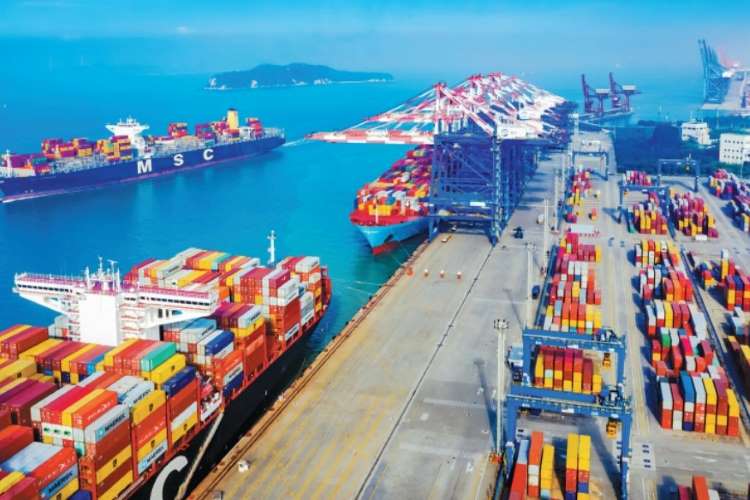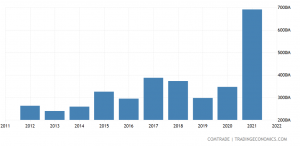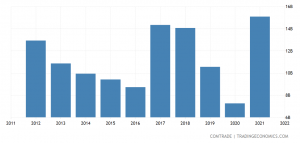
India is eyeing a larger share in global trade and is taking the route of bilateral free trade agreements towards this goal. The latest in the series of FTAs is the one with Australia. Canberra too wishes to reduce its dependence on China; hence the timings of the Australia-India Economic Cooperation and Trade Agreement (AI-ECTA) could have been better for the two countries. By signing an FTA, New Delhi looks to harness the potential of Australia’s vast and rich mineral resources. It is expected that AI-ECTA will lead the country into a much bigger pact, the Comprehensive Economic Cooperation Agreement (CECA) which is under negotiations.
With the trade deal, importing coking coal and uranium from Australia for zero duty is also on the cards. New Delhi is also focused on enhancing services trade between the two countries. This is the second such trade pact signed by India after Narendra Modi became the Prime Minister in 2014. The government was earlier against the idea of FTAs, but now sees them as a major driver of international trade. With the latest FTA, the government hopes to provide a fillip to employment generation.
A prelude to RCEP
With the deal expected to manifest soon, India hopes that AI-ECTA will transform into CECA and pave the way for its entry into the Regional Comprehensive Economic Partnership (RCEP), an ambitious mega trade pact between 14 countries. While RCEP came into force earlier this year, India had walked out of the negotiations in November 2019, citing the damage it may cause to some domestic sectors. China’s dominant position and objections by the domestic dairy sector were the real behind India’s decision not to join RCEP. The RCEP is a free trade agreement among Australia, New Zealand, Brunei Darussalam, Cambodia, China, Japan, Laos, Singapore, Thailand, Vietnam, Korea, Malaysia, Myanmar and the Philippines.
Indian exports to Australia

Indian imports from Australia

READ | India’s housing finance companies struggle to stay afloat
Understanding the importance of the mega trade bloc, India had decided In November 2020 that it will keep the option of joining the pact in the future open. Currently, New Delhi has free trade agreements (FTAs) with almost all RCEP members, except China and New Zealand.
Objectives of Australia-India FTA
Under the deal, Australia has agreed to remove customs duty on over 98% of the traded goods and on 100% tariff lines over a period of five years. India too has agreed to do away with custom duties on 40% of products immediately and on 70.3% tariff lines over 10 years. Sectors such as textiles and apparel, agricultural products, leather, furniture, jewellery, and pharmaceuticals will benefit from the deal.
The trade deal will also help the services sector as India is expected to send 1,800 yoga teachers and Indian chefs to Australia every year. On top of this, 1,000 work-cum-holiday visas will also be available for young professionals. The deal has also opened avenues for post-study work visas up to four years which is expected to benefit over 100,000 Indian students.
The deal also brings cheer for wine lovers as New Delhi has decided to reduce tariffs on 750 ml bottles of Australian wine over 10 years. The duties will come down from 150% at present to 50% if the value of the bottle is between $5 to $15. For bottles above $15, a reduction of tariff from 150% to 25% is proposed over the course of a decade. However, status quo will be maintained for wine bottles priced below $5.
India currently has a trade deficit of $8.5 billion with Australia according to FY22 numbers. The two countries are expected to ramp up bilateral trade to $45-50 billion in five years from $31 billion currently, according to an estimate by the ministry of commerce and industry. India exported $8.3 billion worth of e goods and services and imported $16.8 billion worth of goods. The two economies had initiated the CECA talks in 2011, however, it remained stuck for years until both countries came closer strategically united by their joint resentment against China’s dominance in Asia Pacific.
India needs to exercise caution while signing FTAs as it may hamper export prospects of the country. Binding commission on new issues such as environment, labour and sustainability in the proposed free trade agreements may hamper its export options, a report by Global Trade Research Initiative said. The report has warned that New Delhi’s already weak FTA outcome may worsen if it takes obligations on new issues.
